The story goes that sometime during the last Ice Age, perhaps 20,000 years ago or so, small bands of seafaring humans followed the fertile coastal waters of the Pacific Rim from Asia north into Beringia—the hinterland between Russia and Canada—so entering the Americas for the first time. There followed a rapid intergenerational migration down through the continent all the way to Central and South America. How were humans able to spread so quickly across such a vast area? Some of the latest research suggests it was thanks to a unique ocean ecosystem: kelp forests.
The “kelp highway hypothesis” has largely replaced the Clovis theory, which held that terrestrial hunter-gatherers crossed the Bering land bridge in order to reach America. Instead, many researchers now believe that maritime peoples took a largely linear route along America’s west coast, harvesting a wide variety of resources from the system of kelp forests that runs all the way from present day Alaska to Baja California and beyond. Fish, shellfish, and marine mammals would have provided reliable year-round sustenance. The kelp itself can be eaten, while its strong stipes (stems) were likely fashioned into fishing lines and tools.
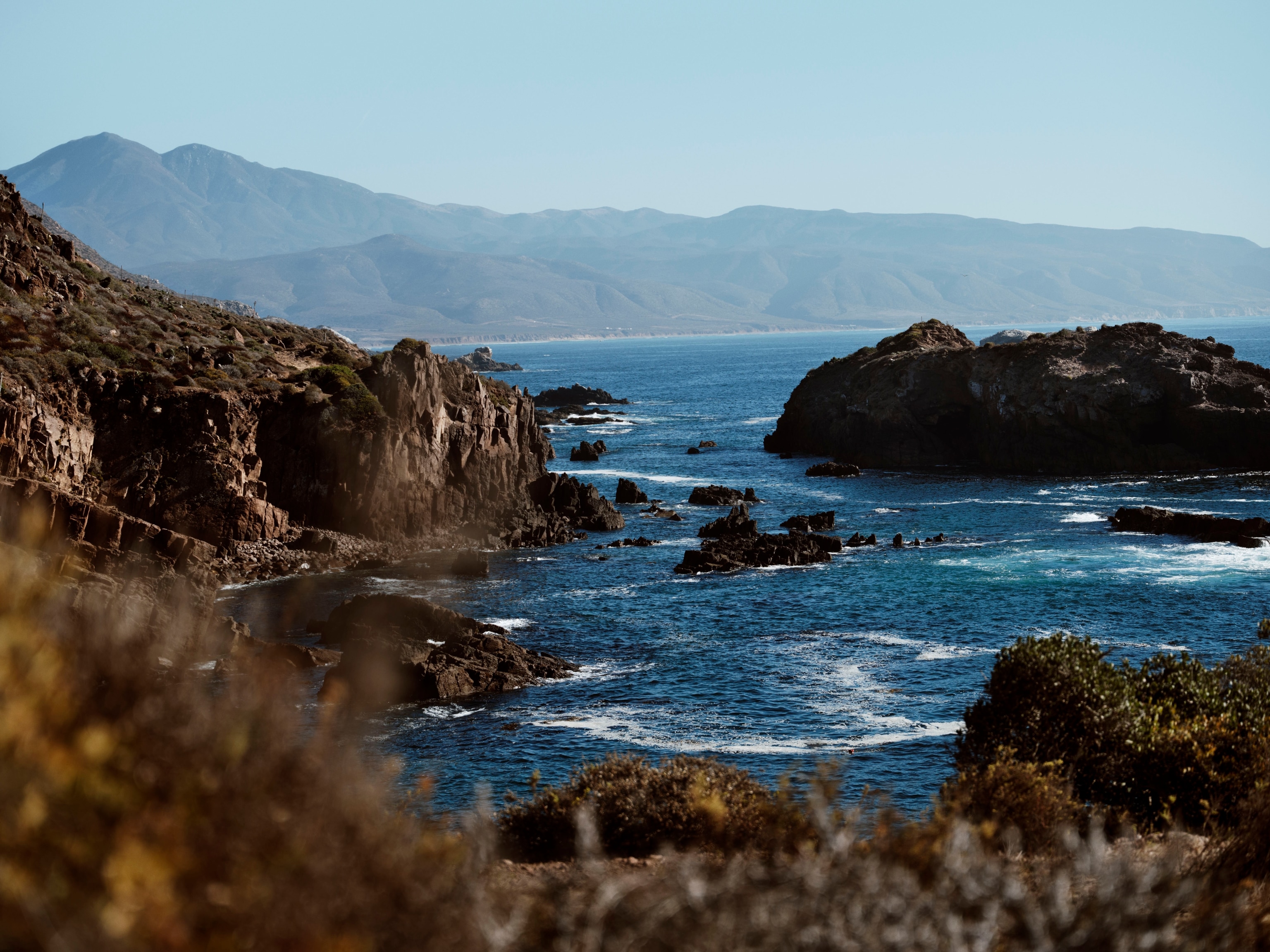
Baja California is close to the southernmost reaches of the Pacific kelp forest highway that stretches all the way from Alaska to Mexico.
Photograph by Celeste Sloman
Kelp refers to more than 100 species of large brown seaweed. After coral reefs, kelp forests are among the most productive marine ecosystems on Earth. They provide both food and shelter to thousands of species including invertebrates, fish, marine mammals and seabirds. Kelp grows quickly, adding up to 18 inches (45 centimeters) a day if conditions are optimal, reaching an average height of 100 feet (30 meters). Together, it forms dense forests—three dimensional structures in the water column that offer a wide variety of habitats and ecosystem services from the seabed through the mid-levels to the canopy close to the surface.
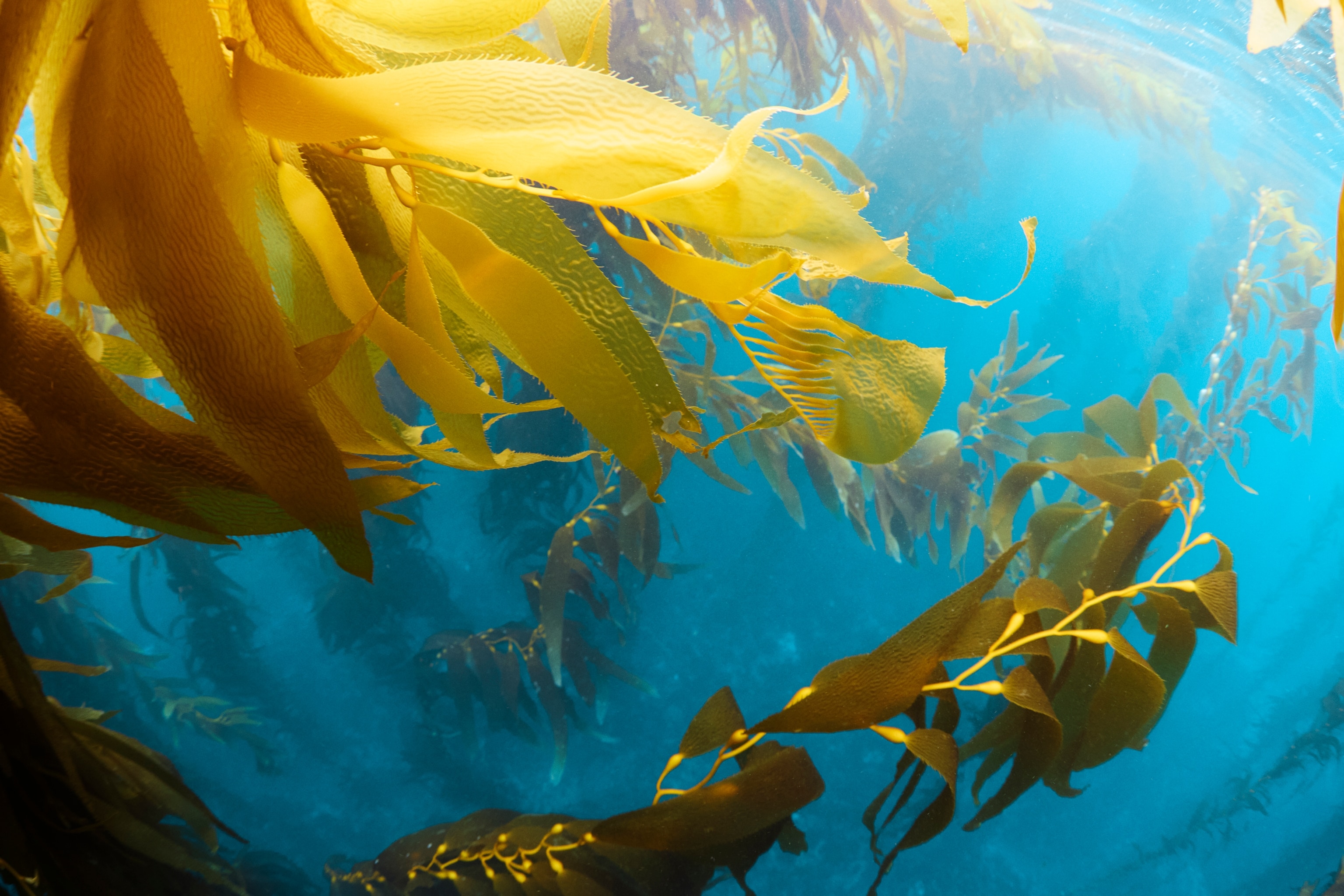
One of the fastest growing organisms on Earth, kelp can reach heights of 200 feet (60 meters) and more, creating a range of habitats in the water column, from sea bed to canopy.
Photograph by Celeste Sloman
For Mexican marine biologist Rodrigo Beas, there is nothing quite like these forests. “First time I saw the kelp forests, I was like, wait, you can fly in a forest?” he exclaims. Beas grew up with coral reefs on his doorstep, but on a chance visit to the cooler waters of the Pacific he encountered bull kelp for the first time and fell in love. Like its terrestrial counterparts, giant kelp supports a complex and delicate ecology, from microscopic algae to urchins, stars and jellyfish to rockfish, bass and gobies—all the way through to sea otters, sea lions, sharks and cetaceans.
“Kelp forests provide all these different resources and a lot of them are fished or fishable,” Beas explains. “[But] when the kelp forest is gone, all the different species associated with the kelp forest are gone, too.”
Like so many natural ecosystems around the world, many kelp forests are struggling as a perfect storm of impacts, including overfishing, pollution, disease and climate change, take their toll. Perhaps the most pressing and immediate of these challenges has been an explosion in sea urchin populations—caused by warming ocean waters.
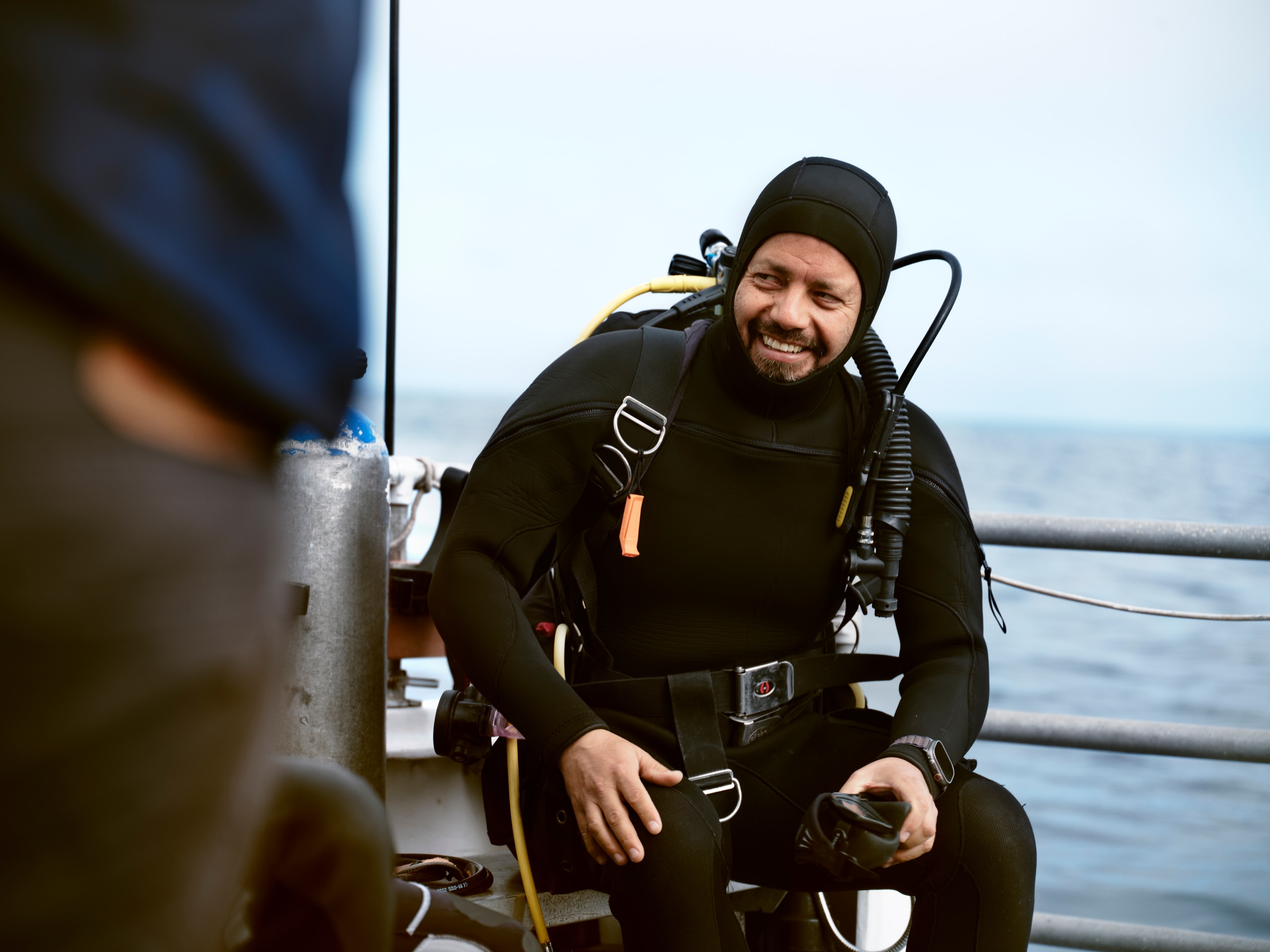
Marine biologist Rodrigo Beas prepares to dive one of the few healthy tracts of kelp forest that remain near Ensenada in north Baja California. Successive heatwaves have reduced forest cover by more than 90 percent in the area.
Photograph by Celeste Sloman
Kelp is algae that thrives in cold, nutrient rich waters—even slight temperature increases can disrupt the way it photosynthesizes and kill it off. “Between 2013 and 2016, we recorded 355 days of marine heatwaves,” says Beas. “So, it was very hot water over a long period of time and that reduced the forest coverage by 80 percent in this area of Mexico.”
With its quick-growing capabilities, kelp should be able to bounce back, but that’s where the sea urchins come in. According to Beas, when kelp forests are thriving, purple sea urchins remain relatively passive, staying in their cracks and crevices and feeding mainly on kelp detritus.
“When the kelp is gone, the sea urchins switch their behavior to more active and aggressive eating and the reef gets covered with sea urchins and nothing but sea urchins,” Beas explains. “They produce these sea urchin deserts. And as the kelp forests disappear, so do the sea otters, sharks, lobsters, crabs and fish that feed on sea urchins, helping to control their population.”
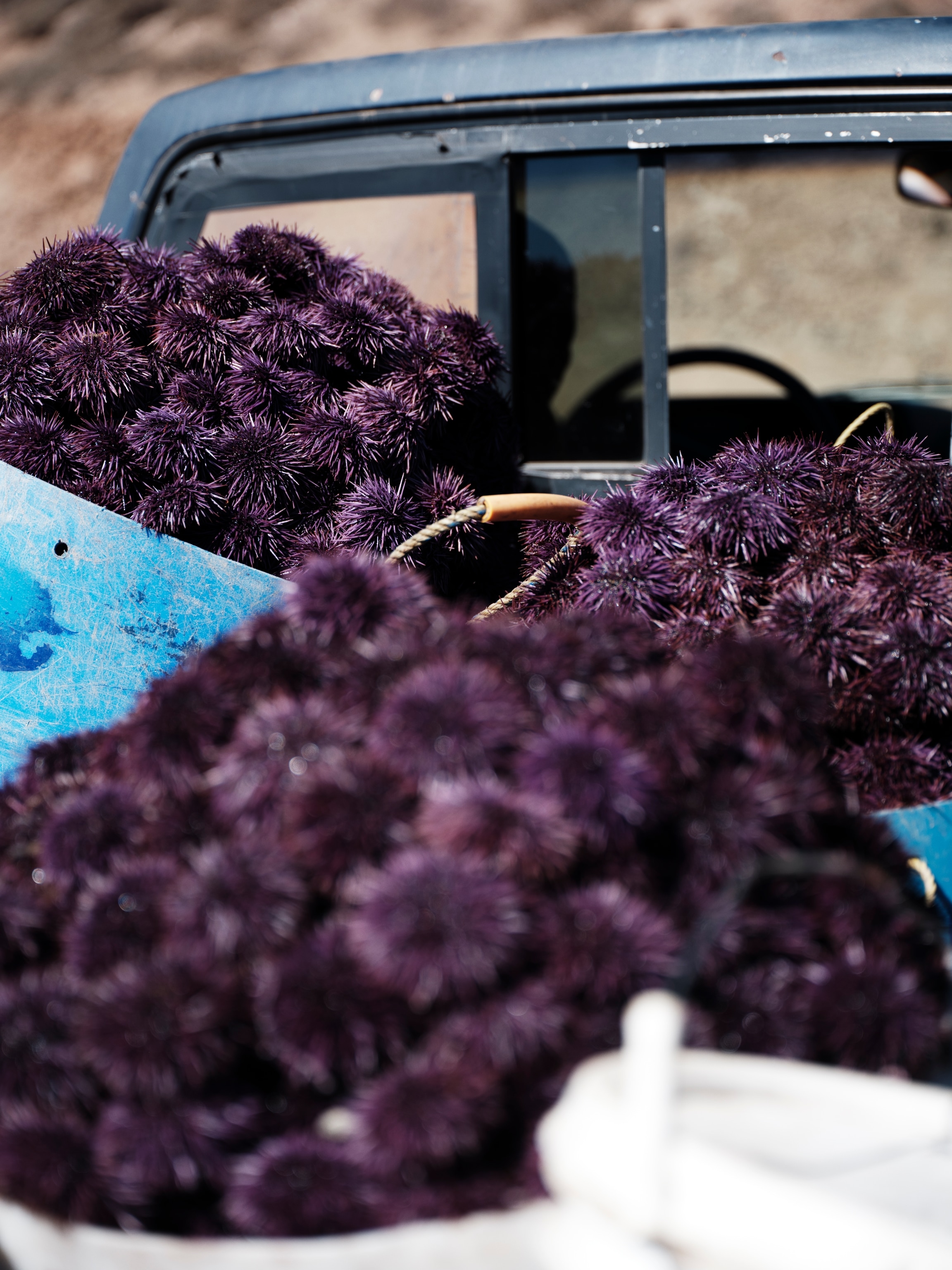
Purple urchins have overrun the kelp forests—a stress response triggered by a lack the kelp detritus they usually feed on, which causes them to eat more aggressively.
Photograph by Celeste Sloman
This is a classic example of how climate change can massively affect trophic cascades, triggering widespread destruction across an ecological system—and impacting human livelihoods, too. Fishing communities have had to adapt to rapidly shifting dynamics, as their traditional fisheries are disrupted. Many of the invertebrates and fish species that thrive in the kelp forest have a high economic value, so the human cost of this ecological crisis is mounting. In northern California, for example, the red abalone fishery, worth millions of dollars annually, has been closed indefinitely.
There is no easy answer to arrest the decline in kelp forests—but efforts are underway to help them recover. Volunteer divers armed with hammers and other tools are culling purple sea urchins in strategic locations, creating cleared zones where kelp can regenerate. There’s evidence that this hands-on approach can be successful in giving kelp the breathing space it needs to make a comeback. Scientists are also exploring ways to make kelp more resilient to warming waters—potentially seeding heat-resilient species of kelp in highly damaged areas.
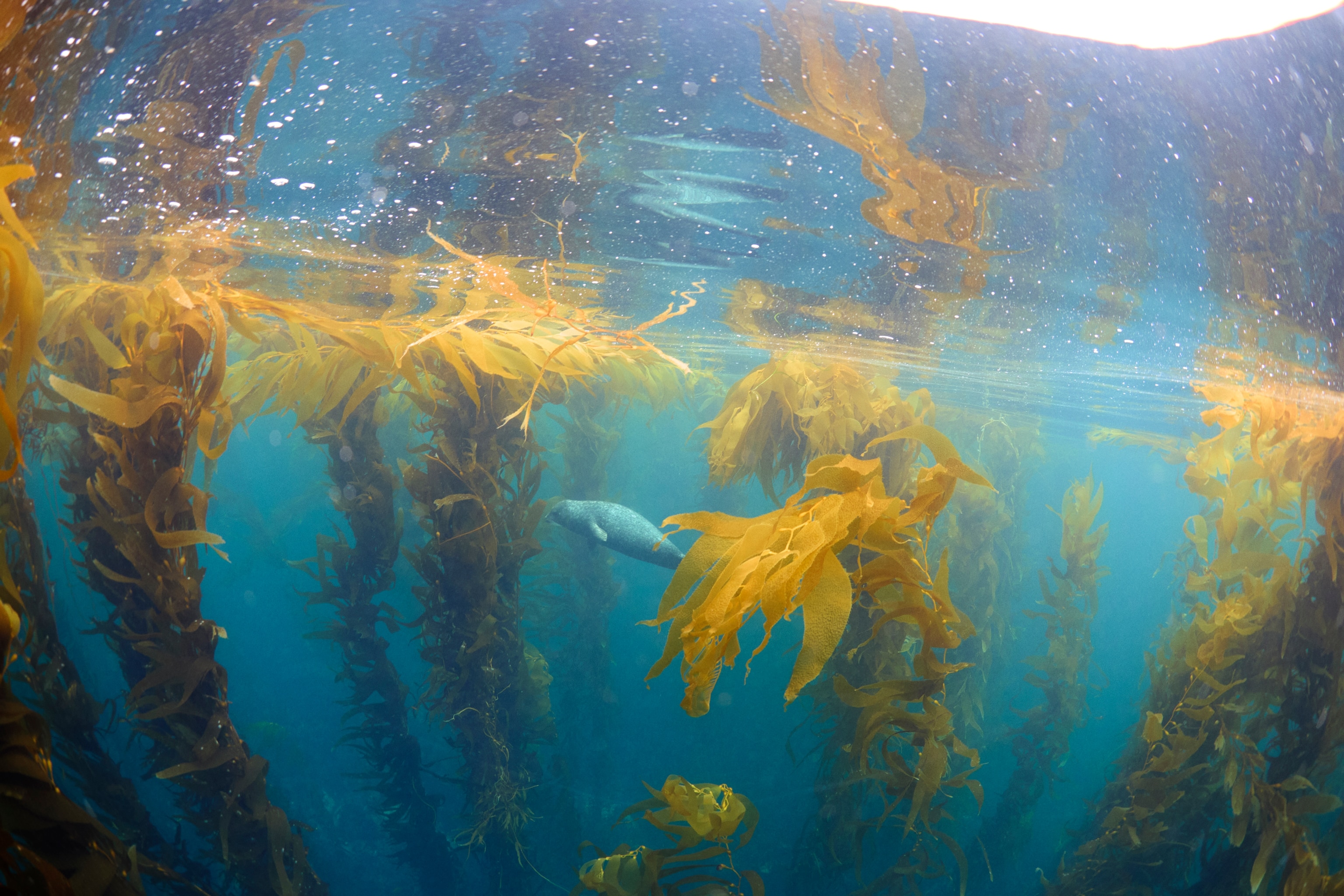
Kelp forests are one of the most productive marine ecosystems on the planet. They’re also resilient and there is hope that they can recover with our help.
Photograph by Celeste Sloman
Beyond their historical significance and economic value, kelp forests are powerful allies in the fight against climate change, sequestering vast amounts of carbon and buffering coastlines against storms that are likely to become increasingly violent. They’re also living laboratories for understanding how marine ecosystems might adapt to changing conditions.
Kelp has been around for 23 million years. It has survived ice ages and heatwaves and provided a pathway for humans to populate an entire continent. Bringing it back will require the kind of ingenuity and collaborative effort that drove those early migrations in the first place.
To protect vital marine ecosystems like kelp forests, we need to understand them better. It’s one of the reasons that Prada Group teamed up with UNESCO-IOC to create SEA BEYOND educational program—a global initiative that teaches ocean literacy to thousands of children in schools around the world, inspiring young generations to safeguard the ocean. 1% of the proceeds from the Prada Re-Nylon for SEA BEYOND Collection benefit SEA BEYOND.
Find out more about how understanding our ocean can be the very thing to help save it; and more about Prada Group’s work with UNESCO-IOC here.



